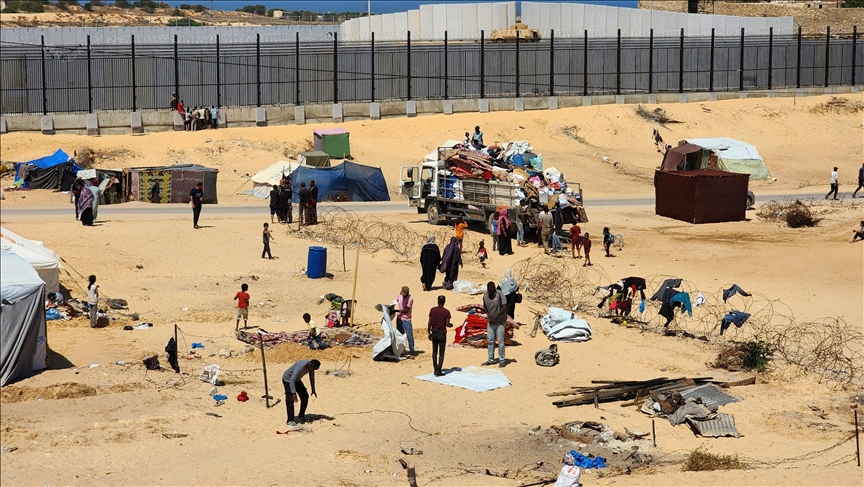

By Anadolu Agency
CAIRO
Egypt on Saturday voiced concern over the Israeli army’s control of the Rafah crossing, warning “all concerned parties” that Israel is responsible for the deterioration of humanitarian conditions in the Gaza Strip, an Egyptian media outlet reported.
Amid Israeli military escalation and widespread displacement in the region, Egypt “warned Israel of the repercussions of its continued control over the Rafah crossing and held it fully responsible for the deterioration of the humanitarian situation in the Gaza Strip,” Al-Qahera News said, citing a high-level source.
Thousands of Palestinians fled from the center of Rafah city in southern Gaza to western areas of the Strip on Saturday hours after the Israeli army warned residents to evacuate the area in preparation for expanding military operations in the city, according to eyewitnesses.
Earlier in the day, the UN agency for Palestine refugees (UNRWA) said about 150,000 Palestinians have so far fled Rafah where an Israeli invasion is underway despite international outrage and warnings of a humanitarian crisis.
“Everywhere you look now in west Rafah this morning, families are packing up. Streets are significantly emptier,” Louise Wateridge, a UNRWA spokeswoman, said on X.
Despite escalating international warnings against expanding military operations in Rafah, the Israeli army ordered the immediate evacuation of residents from neighborhoods in the city’s heart on Saturday morning, apparently expanding its operations that began on Monday east of town.
In a statement, it also warned residents and displaced people from large areas in the north of Gaza to evacuate and seek refuge west of the city.
The Israeli army is attempting to gather displaced Palestinians from Rafah in the Mawasi area, which stretches 12 kilometers and is 1 kilometer deep from Deir al-Balah in the north, passing through Khan Younis Governorate in the south, and ending at the outskirts of Rafah in the far south of the Strip.
The area is largely open and not residential, lacking infrastructure, sewage systems, electricity lines, telecommunication networks, and the internet, with most of its land divided into agricultural greenhouses or sandy areas.
We use cookies on our website to give you a better experience, improve performance, and for analytics. For more information, please see our Cookie Policy By clicking “Accept” you agree to our use of cookies.
Read More